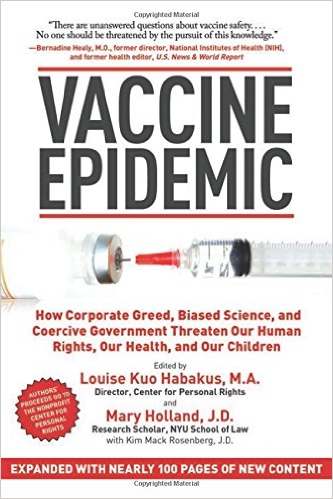Vape anyone? There are more than 460 e-cigarette brands on the market worldwide. Find that mind boggling? Try choosing one of the more than 7,764 unique flavors. The $3 billion global industry is booming — 12.6% of US adults have tried e-cigs and 3.7% regularly use them. But the stats that grab our attention relate to children.
Kids aren’t smoking anymore; they’re vaping. Between 2011 and 2014, the Centers for Disease Control and Prevention (CDC) reported that e-cigarette use among high school students increased from 1.5% to 13.4%; a dramatic rise that was matched by a corollary drop in smoking rates.
In 2015, the FDA reported that 16% of high schoolers and 5.3% of middle schoolers vape.
What are e-cigarettes?
Electronic cigarettes are devices that contain a cartridge, an atomiser, and a lithium-ion battery. The cartridge can be filled with eLiquid, usually a mixture of propylene glycol, nicotine, and flavorings. Inhale on the device and a small sensor will detect the airflow, activating the atomizer, which heats the eLiquid and converts it into an aerosol.
The name, however, belies a world of complexity (and ample marketing opportunities). There are cig-a-likes, in which the battery resembles a cigarette. There are egos, which sport wider batteries that are touted as more economical. And there are mods, which offer options for durability, ease of use, customization, and built-in vs removable batteries, some of which allow the use to vape while charging.
Vaping is safer since it helps smokers quit, right?
The scientific community is in almost unanimous agreement that electronic cigarettes are less dangerous than the carcinogens served up by smoking traditional cigarettes.
And many believe that current smokers may find some benefit in switching to e-cigs. In England, the country’s National Health Service has been extraordinarily outspoken in advocating for the use of e-cigs as a smoking cessation aid. Government regulators in the UK expect that electronic cigarettes will soon be available, by prescription, to England’s more than 8 million smokers.
The research, however doesn’t bear this out:
In a 2014 study published by Addiction, English researchers reported that people who want to quit smoking are around 60% more likely to find success than people using nicotine patches or gums.
And a randomized clinical trial, considered the most reliable form of scientific evidence, found no difference in the quit-rate between e-cigs and nicotine patches. In fact, neither product worked for the vast majority of smokers.
Undoubtedly, the best course for anyone is to avoid both smoking and vaping. No one really knows how dangerous using e-cigs is, especially long-term. The products are just too new, and too disruptive, for that evidence to be available. It’s clear, however, that e-cig users should be separated into two groups: 1) former smokers, most of whom are hoping to quit, and 2) new adopters, people who have never used nicotine-containing products before, many of whom are… kids.
Nicotine and kids
For children, along with adults who don’t smoke already, using electronic cigarettes almost certainly poses serious health risks, with absolutely no benefit. There’s evidence that kids who vape now may be more likely to begin smoking later — a fact which should trouble any parent.
And what about the nicotine? E-cigarettes can foster nicotine addiction and no addiction could be considered desirable. There’s little evidence that nicotine itself is any more dangerous than caffeine for adult vapers. But government research, including this 50-year CDC study on smoking-related nicotine exposure, has shown that nicotine use among adolescents can inhibit cognitive development and lead to long-term behavioral disorders. And it’s bad for our little ones in utero, too. The FDA frequently advises that nicotine exposure can be disastrous for fetal health, so both vaping and traditional cigarettes should be avoided during pregnancy.
The average smoker absorbs around 1 milligram of nicotine per cigarette. Different e-Liquids, on the other hand, have varying nicotine levles. Many manufacturers even sell nicotine-free e-Liquids. That makes it difficult to compare nicotine intake between cigarettes and e-cigs. Nicotine absorption is another matter.
In an interview with WebMD, Dr. Gordon Strauss, a psychiatrist and founder of smoking cessation advocate, says: “Most of the nicotine in e-cigarettes gets into the bloodstream through the soft tissue of your cheeks… instead of through your lungs, like it does with a tobacco cigarette.” According to Strauss, this distinction means that the nicotine in traditional cigarettes reaches the brain far quicker, “which may make them more addictive and satisfying.” Of course, that’s small comfort where children are concerned. Nicotine is still extremely addictive and signs suggest that many kids are getting their first taste of the stimulant by using e-cigarettes.
Accidental nicotine poisoning in children has been linked to e-Liquids across the country. In 2013, more than 1,300 poisonings were reported, according to the New York Times, more than 300% more than were reported the previous year.
Vaping chemicals should grab our attention
Beyond the risk of young vapers becoming smokers, however, health regulators have raised serious additional concerns about the e-Liquid chemical mixtures used in vaporizers. Besides the nicotine, they contain known carcinogens.
This FDA laboratory analysis discovered a family of tobacco-specific carcinogens in around half of tested e-cig samples. And in 2014, a group of researchers commissioned by Japan’s Health Ministry reported discovering “recognized carcinogens” in e-cigarette vapor — at levels ten times those found in combustible cigarettes. That study, however, was never published (and may not even have been peer-reviewed, according to Popular Science).
So, what are these harmful chemicals likely produced by vaping?
Formaldehyde, for example, has been detected at dangerous levels in overheated vapor. In reality, most people will never use the voltage at which e-cigs can produce any formaldehyde, let alone harmful levels of the chemical, since it produces an extremely acrid taste. Lots of vaporizers don’t allow users to control their voltage level in the first place.
For more on formaldehyde in e-cigarette vapor, read this study in the New England Journal of Medicine. An extensive discussion on that study’s merits and potential weaknesses is collected on PubMed.
Diacetyl, a chemical linked to respiratory diseases after long-term exposure, has been found in a majority of flavored e-cigs. Vaping advocates note that diacetyl is also present in many artificially-flavored foods, like microwave popcorn, and lots of companies manufacture diacetyl-free e-Liquids. Perhaps more persuasively, traditional cigarettes contain around 110 times more diacetyl than the average e-cigarette.
For more on diacetyl in e-cigarette flavorings, visit Environmental Health Perspectives of the National Institute for Environmental Health Sciences.
Diethylene glycol is a clear, colorless, nearly odorless, viscous liquid that is poisonous. Although it has been implicated in numerous mass (and often fatal) poisonings since 1937, a comprehensive review has never been completed, according to this PubMed abstract. Studying the chemical contents of 18 leading e-cigarette products, FDA researchers found low levels of diethylene glycol in a single eLiquid cartridge. The toxic chemical is found in antifreeze, and also in skin creams and deodorant.
Kids sure do love the product
There’s little doubt, however, that younger people are drawn to electronic cigarettes. For one thing, e-cig manufacturers market to kids — or at least, use marketing practices that appeal to youth. In 2014, a Congressional report found that 8 out of the 9 largest e-cig companies advertised their products through “youth-oriented” sponsorship events, even offering free samples, a practice that has now been made illegal. Advertising spots are often purchased during programs with large youth viewerships, and flavorings like “Cherry Crush” and “Peachy Keen” are often modeled after candy.
The marketing has worked. E-cigarettes are now the most commonly used tobacco product among middle school and high school students. According to surveys conducted by the CDC, around 5 in 100 middle school students reported using an e-cigarette within a month-long period in 2015. Fewer than 1% of middle school students were trying the products in 2011.
Is anyone paying attention?
Compared to England’s endorsement of e-cigs as a smoking cessation aid, authorities in the US have been wary to sign off on their potential benefits. So has the European Union, where health authorities moved relatively quickly to curb e-cig sales and advertising. While selling e-cigarettes is legal throughout the EU, marketing the products – either to children or adults – is not. In 2014, the European Parliament passed a host of regulations controlling the chemical contents of eLiquid, according to TIME Magazine. Along with limiting the maximum allowable amount of nicotine, the EU forbids the advertising of e-cigs and clamped down on cross-border marketing.
American regulators have been slow to act. E-cigarettes only came under FDA authority in August 2016 when the New Tobacco Rule was published to address e-cigs, which they include in Electronic Nicotine Delivery Systems (ENDS). Before that, the industry was completely unregulated, a veritable “Wild West” in which manufacturers and retailers could do literally anything and get away with it. Now, marketing to minors is illegal. A valid photo ID is required for any e-cig purchase in the US. Parents of children already addicted to vaping might say this is too little too late.
Within the next two years, every electronic cigarette sold in the United States will have to apply for federal approval. Thorough scientific reviews of eLiquids, and the technology used to vape them, are on their way.
“Explosive” growth causing severe injuries
If this isn’t worrisome enough, there’s more. Hopefully, government regulators will also focus their attention on the lithium-ion batteries used in electronic cigarettes, which have been exploding unexpectedly. More than 200 explosions have already been reported, often leading to severe injuries and property damage. Some injured vapers are even filing lawsuits against e-cig retailers and distributors, the Wall Street Journal reports. Getting the battery manufacturers into court has been difficult, though, since most are based in China.
The incidents seem to involve more complex vaporizers, known as “mods,” that use rechargeable lithium-ion batteries. Remember those “hoverboards” that burst into flames during operation? That was lithium-ion technology, too. While lithium-ion batteries are inherently dangerous, some of the ones being sold at vape shops appear to be defective.
***
So, are e-cigs safe? This important question depends on who you are. Current smoker looking to quit? E-cigarettes might help curb your nicotine dependency and eventually lead to permanent cessation. Kid or parent concerned about health impacts? A bit of education is in order. In my opinion? Avoid the things entirely.
Editor’s note: When Laurence first approached me to work on an e-cig post, I wasn’t so interested. Yes, thousands of vape storefronts seem to have proliferated overnight but they’re for adults not kids, right? Wrong! Don’t assume that regulators have been ahead of the wave. Buyer, and parents, beware.
 Laurence Banville, Esq is a personal injury lawyer in New York City and Managing Partner at Banville Law. He is currently investigating the allegations of multiple vapers who sustained severe injuries during an e-cig explosion. You can learn more about Laurence’s practice at TheProductLawyers.com.
Laurence Banville, Esq is a personal injury lawyer in New York City and Managing Partner at Banville Law. He is currently investigating the allegations of multiple vapers who sustained severe injuries during an e-cig explosion. You can learn more about Laurence’s practice at TheProductLawyers.com.
Photo credit: Adobe Stock #56665364













can you just tell me are they safe because i have no time to read the whole thing
just tell me
YES NO
They are not safe.